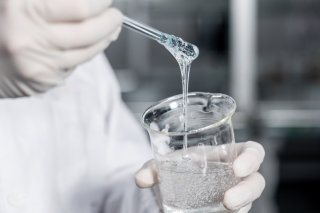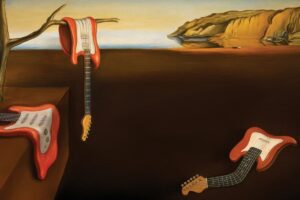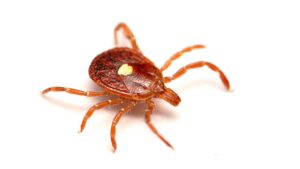
An interdisciplinary team of researchers from McGill University has made a groundbreaking discovery by developing an ultra-strong, environmentally friendly medical glue from marine waste. This innovative bioadhesive, which promises significant advancements in wound care, surgeries, drug delivery, wearable devices, and medical implants, has been detailed in a recent publication in Nature Communications.
“Being able to produce glues that can close wounds or make something strongly adhere to the skin is critical for many medical interventions,” explained Audrey Moores, a Professor in the Department of Chemistry at McGill University. “Many existing bioadhesive products are based on toxic compounds, while overall, there is a need to explore new materials that demonstrate both high adhesion and strong fatigue resistance, or the ability to hold even if pulled apart repeatedly.”
Innovative Use of Marine Waste
The newly developed bioadhesive is derived from chitosan, a chemically modified form of chitin, which is a natural component found in the exoskeletons of shellfish and certain fungi. The research team, led by Moores and Jianyu Li, Associate Professor in the Department of Mechanical Engineering and Canada Research Chair in Tissue Repair and Regeneration, has successfully modified chitosan into a nanowhisker shape. This shape is essential to the glue’s effectiveness, achieved through a mechanochemical process pioneered by Moores and co-author Edmond Lam.
“We chemically manipulate this material to turn it into nanochitosan, which has a range of different properties we can finetune. Using this nanomaterial, we can make nanoglue,” Moores stated.
Ultrasound Technology Enhances Adhesion
The application of the nanoglue is facilitated by a unique ultrasound technology developed by the Li group. This technology allows the nanowhiskers to adhere firmly to the skin and interlock into a rigid, resilient scaffolding, significantly enhancing the glue’s strength and durability.
“Imagine you have a Band-Aid on your hand. It’s difficult to get it to stay because your hand moves a lot,” Moores explained. “To get it to stick, you need the skin to be permeable to the glue. We used microneedles or ultrasound for that.”
The discovery that ultrasound was critical to forming a strong adhesive was unexpected. Initially, the strategy was to make the nanoglue stick to the skin, but the team found that ultrasound also helped build a complex, interconnected network of nanostructures. “These nanowhisker glues are simply better than the current glues out there,” Moores added.
Broader Applications and Future Potential
The implications of this discovery extend beyond healthcare. The nanostructure has promising applications in various engineering contexts, offering a sustainable alternative to traditional adhesives.
Moreover, the bioadhesive is fully biocompatible, even for individuals with seafood allergies. “People who are allergic to shellfish are not allergic to chitin, but the proteins. We can remove these in the manufacturing process and avoid allergic reactions,” Moores noted. “We could also theoretically make a vegan version from fungi.”
About the Study
The study titled “Nanowhisker glues for fatigue-resistant bioadhesion and interfacial functionalization” was authored by Audrey Moores, Jianyu Li, and their colleagues Shuaibing Jiang, Tony Jin, Tianqin Ning, Zhen Yang, Zhenwei Ma, Ran Huo, Yixun Cheng, Davis Kurdyla, Edmond Lam, and Rong Long. The research was funded by several prestigious organizations, including the Natural Sciences and Engineering Research Council of Canada, the National Research Council Ocean program, and the Canada Foundation for Innovation, among others.
This development represents a significant step forward in sustainable materials science, highlighting the potential for marine waste to transform industries traditionally reliant on less environmentally friendly materials. As research continues, the team at McGill University remains optimistic about the future applications of their discovery.






